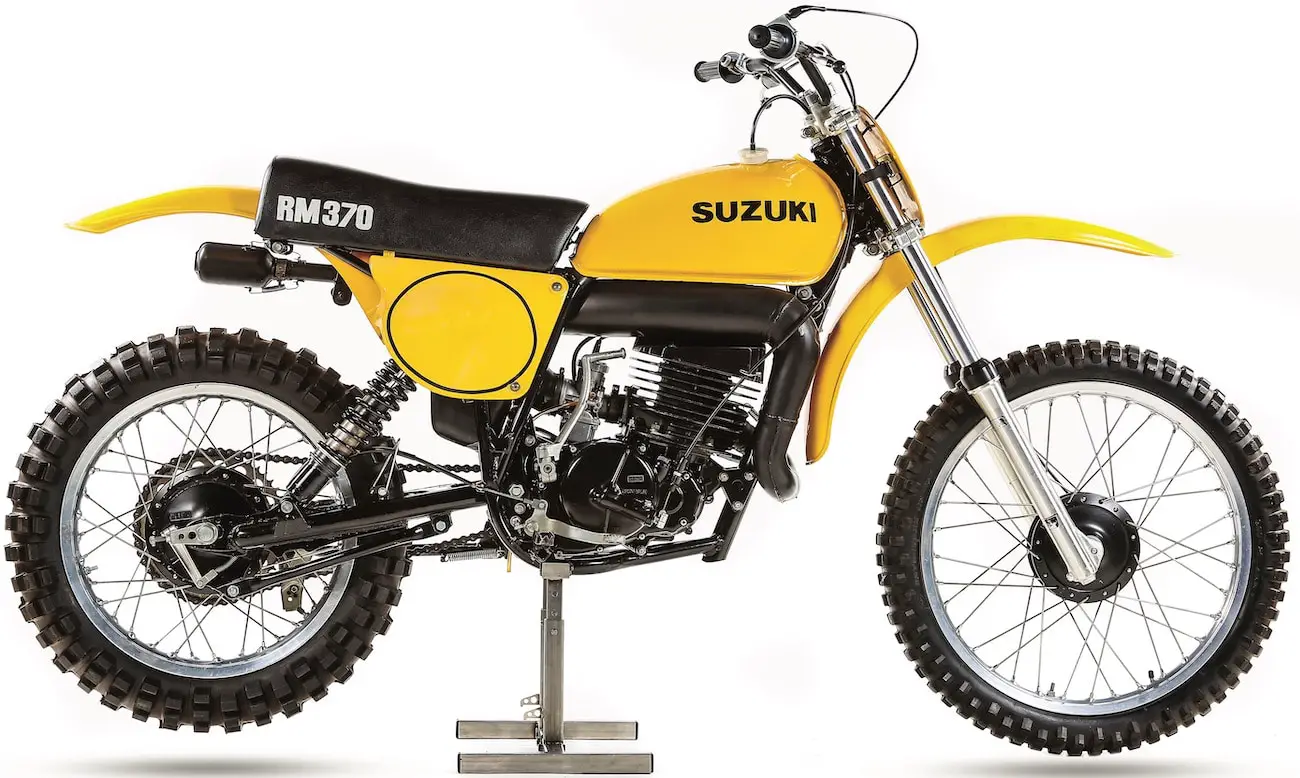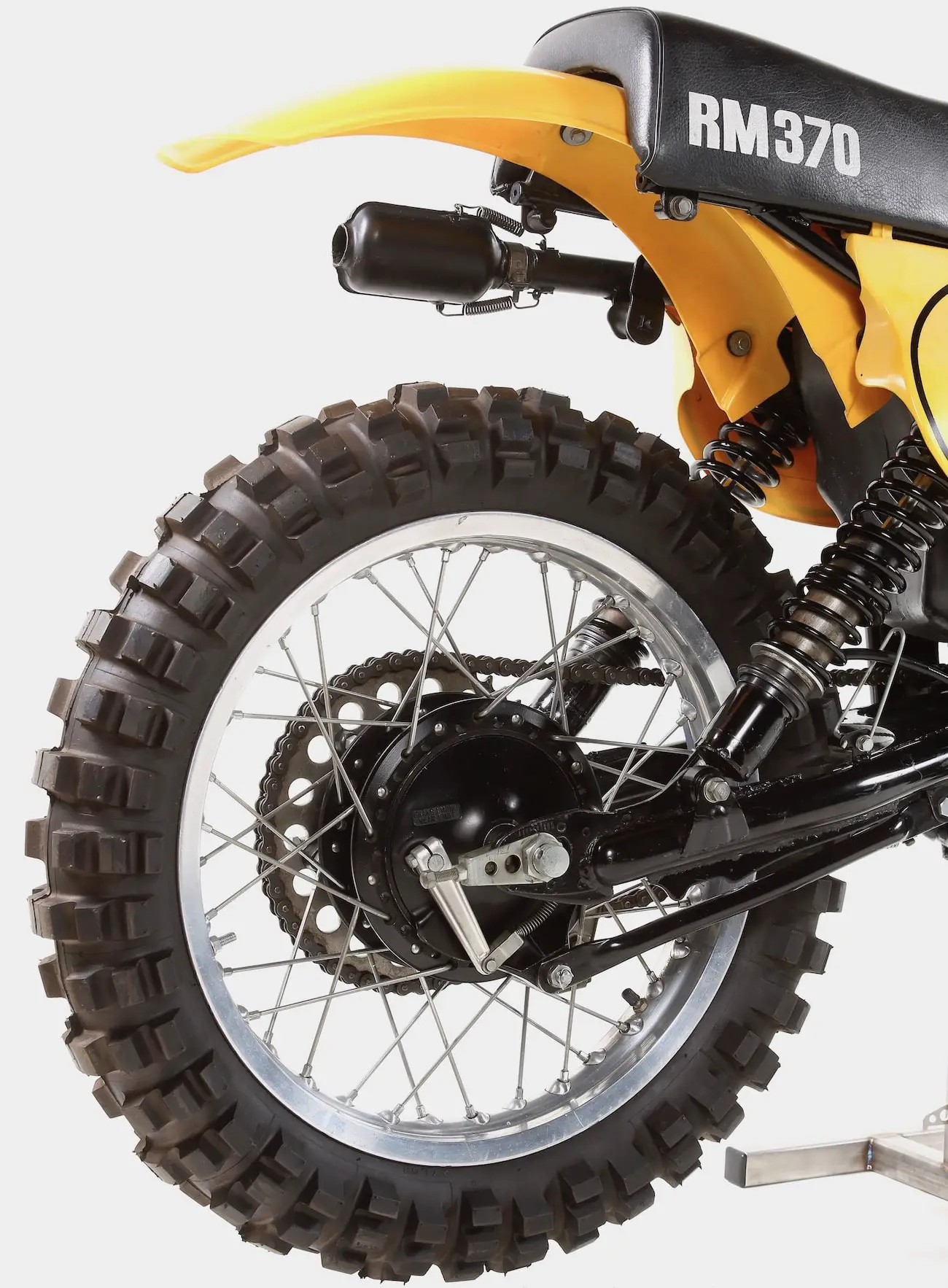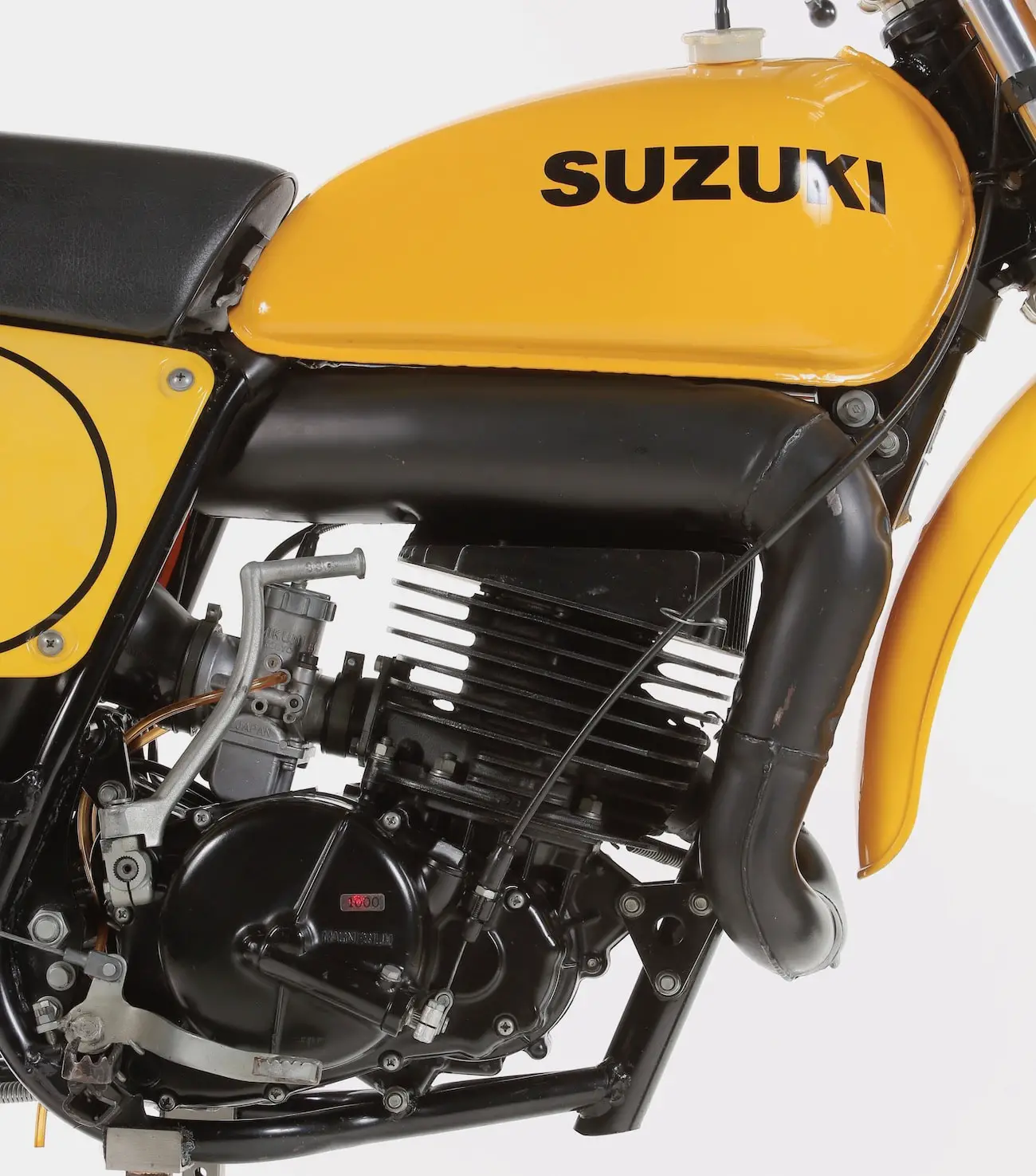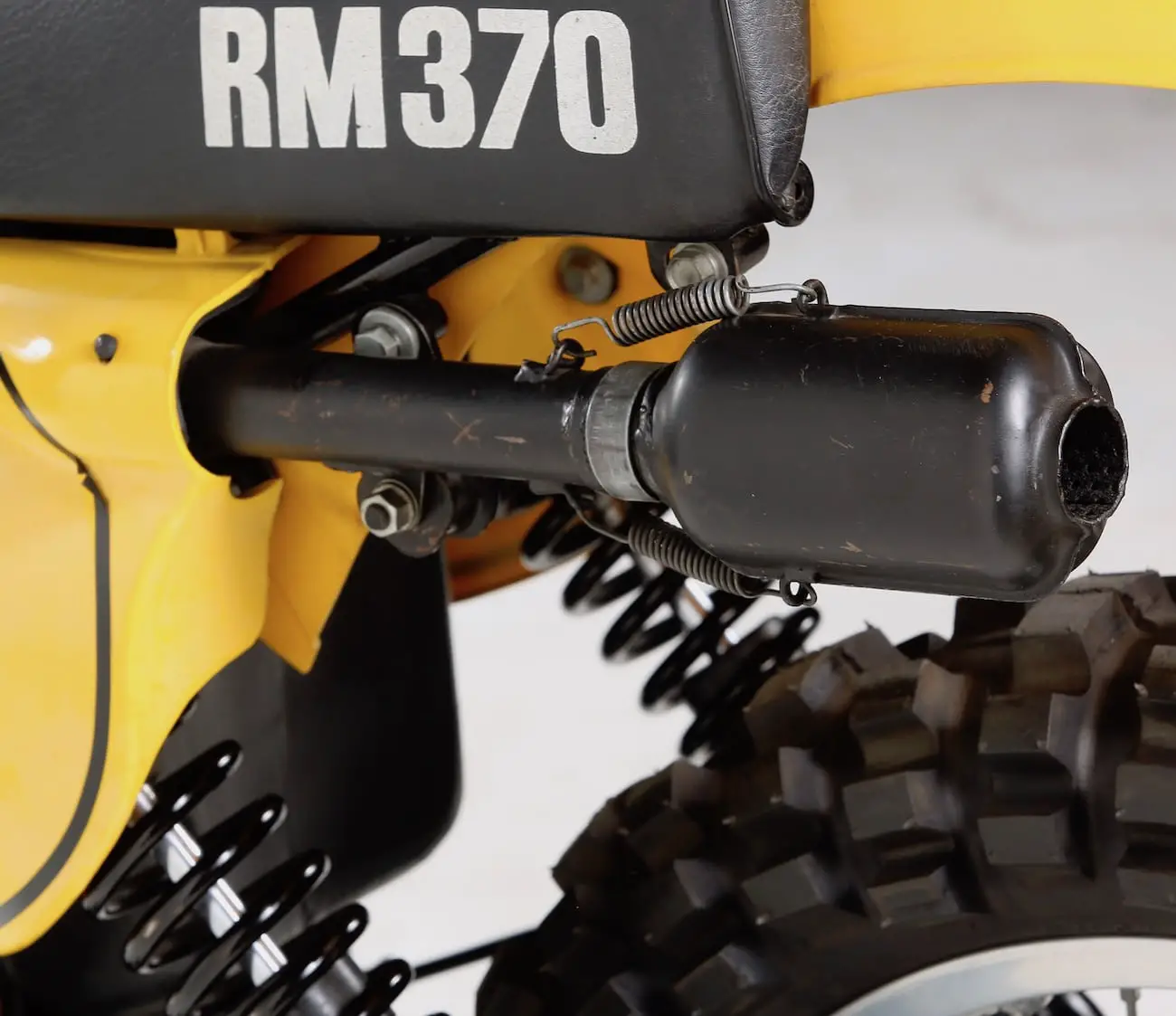CLASSIC MOTOCROSS IRON: 1976 SUZUKI RM370
BY TOM WHITE
By the early 1970s, the manufacturers figured out that increasing the suspension travel would allow the rider to go faster over challenging terrain. Backyard mechanics were cutting the frames and swingarms to allow the shocks to be moved forward and installing cooling fins and heavy springs to help dissipate the extra heat generated from the additional leverage. Yamaha introduced the new Monoshock, but didn’t seem to fully understand that allowing more suspension travel would improve this design. In hindsight; thank you Yamaha, as you opened up a window for me to start White Brothers Cycle Specialties.
Suzuki had jump-started the Japanese involvement into motocross back in 1965 when it sent one of its road racers and two engineers to Europe to develop a 250cc motocross bike. The first editions (RH65, RH66, and RH67) fell woefully short, but that would change when Suzuki hired Olle Pettersson to develop its bikes in 1968. Olle recommended Suzuki hire the top riders of the time, Roger DeCoster and Joel Robert, and it did. World Championships came to Suzuki as a result.
Suzuki followed up its racing glory in 1971 with a production TM model that did remotely resemble its factory race bikes. The TMs came in 125, 250 and 400 versions. The TM400 may have looked like Roger DeCoster’s works bike, but it was seriously lacking in any traits remotely works-like. For the next four years, the manufacturers just put lipstick on a pig. Fast-forward to 1976. The Suzuki engineers built a completely new machine using every bit of ingenuity that came from the efforts of backyard mechanics with the newest information, and lessons learned from previous failures.
Of all the MXers introduced in 1976, the Suzuki RM125, RM250 and RM370 were far superior to any of the other Japanese offerings. The RM370 was lightweight. The frame was durable. Handling was in the ballpark. The power was usable (albeit a little quick off the mark), and the suspension travel was over 9 inches. For a Japanese Open bike, it was quite easy to ride. Within the ranks of loyal Suzuki riders, it was considered the “best open bike ever,” and with Roger DeCoster winning the Trans-AMA series in 1976, the marketing plan got a big boost.
The 1976 RM370’s suggested retail price was $1200. And on the collectors’ market, you might be surprised to learn that these “best open mx bike ever” machines are often available at discount rates.










Comments are closed.